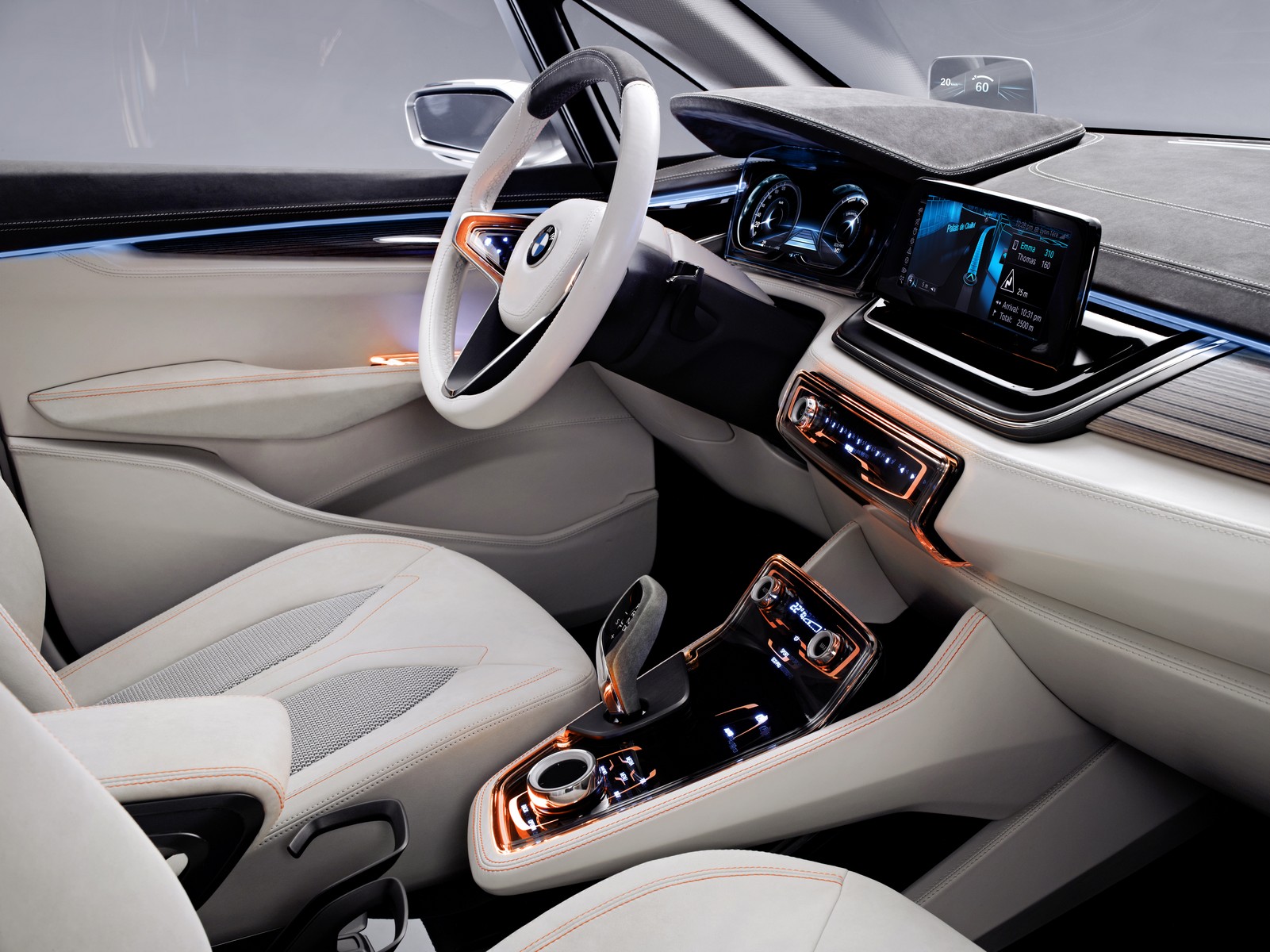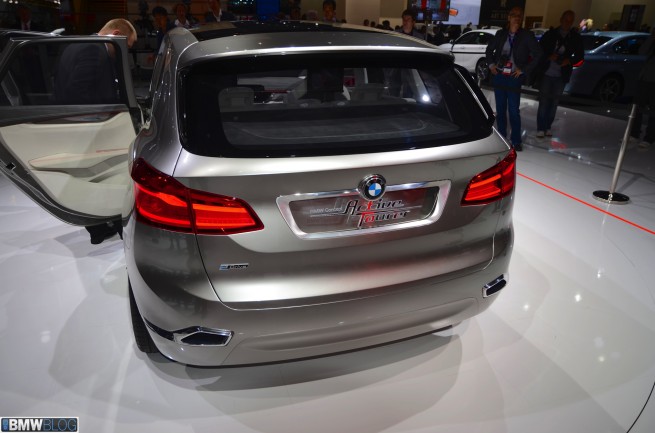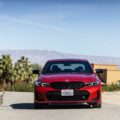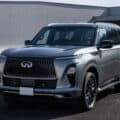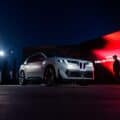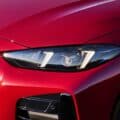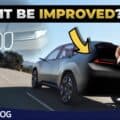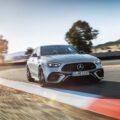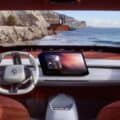At the 2012 Paris Motor Show, BMWBLOG had the exclusive opportunity to chat with Karim Habib, the recently appointed Head of Design at BMW. The 42-year-old Lebanon-born Canadian has been in charge of Exterior Design BMW Automobiles since March 2011. He joined the BMW Group design team in 1998 and, among other achievements, shaped the design of the current BMW 7 Series.
The conversation focused on the design language of BMW’s first front-wheel drive vehicle, the Concept Active Tourer, as well as on current and future state of BMW design.
BMWBLOG: Please tell us the story behind the Concept Active Tourer.
Karim Habib: The Active Tourer is obviously our first car with front-wheel drive architecture. Maybe we shouldn’t put a lot of focus on that because in this case it’s a hybrid. We will have different versions for production. But from a design point of view, the interesting thing is that we try to take the “pure BMW values” that have to do with sportiness, elegance and also proportions – short overhangs, big wheels and really sporty stance – to a market segment where it wasn’t there before. It resembles the way the first X5 brought all the BMW values, styling and driving performance, to a market segment where it wasn’t there before. This is what we are trying to do with this car as well.
BMWBLOG: Any design challenges, taking into account the move from rear-wheel drive to front-wheel drive architecture?
Karim Habib: Yes, quite a lot actually. Regarding proportions – it is the first car where we don’t have a long hood rear, and cabin space had to be reworked. So it’s more of a one box, it has a much higher ride height and it has a hood that goes quite steep and quite low at the front. So these are very different proportions for us. And it was all about trying to get the dynamics into the silhouette. Also like a functional car, if you look at the Active Tourer from the rear, the car is pretty straight, it doesn’t have a lot of shoulders. It was really important for us that we have a body that has a glass cabin that sits on top .
I have to say the rear is my favorite side, we show there a lot of sportiness, a lot of BMW character.
BMWBLOG: Do you foresee major changes from the concept to the production version?
Karim Habib: There are always changes, but 90% is already there.
BMWBLOG: What else have you done to improve the aerodynamics, taking into account it’s a front-wheel drive car?
Karim Habib: In this type of one-box proportions, there are a few things. First of all, there is a very sloping roof – it kind of comes together to the rear. Then we have the spoiler – sounds like a little thing, but actually adds a lot. It lengthens the roof and then the air cuts a bit later, which is important.
After that we have the aero edges on the wheel glass, which are pretty important in terms of aerodynamics. Also working further down, the aero edge coming from the tilt line. This is the first time we use aerodynamics as an opportunity. The aero edge comes from the kidney and then goes to the edge. It’s the first time we do something like that and actually it’s a kind of quiet, it has a better stance. Also we have a few details, ornaments that are actually functional: in the front we have the chrome piece that is the air curtain and on the side we have as well on the doors this aluminum-chrome mixture, that is the breather.
And the mirror also – first of all it’s coming from this chrome strip, so it’s much thinner and also has the blade on top. All these add points for aerodynamics.
BMWBLOG: In terms of limitations to design, crash safety standards, use of metals and materials you are working with – what would you say were the main challenges in designing the Active Tourer?
Karim Habib: One of the major challenges was the pedestrian safety. This is also one of the reasons why the hood is so low, because there is a legislation where depending on where the first contact point is, that is the area that is going to be tested. That’s why you see the hood almost tilted, and the the F30 has that as well, in a very low front. That allows for the pedestrian to be “nicely swept and laid carefully onto the hood.” That was pretty difficult because it makes for a lot of height in the hood from the front. It also initially had very small kidneys, but we found a way to take the kidneys from the front and onto the hood. If you look at the car, I think we found a way to integrate that nicely.
BMWBLOG: With respect to interior space and the mechanics of front wheel-drive, you as a designer, when you start to draw the car, is there something specific you look for? Like knowing to give a look based on interior constraints?
Karim Habib: Well the exterior influences the interior design as well, obviously.
For example on this car we have the semi-command position, meaning that you’re sitting a bit higher. It was important for us to use that to create a feeling of “roominess.” If you look at the dashboard, it is a little bit tilted. It is very leaned, so the surfaces are coming together towards the front. They look very neat, very horizontal, but when you look at it from the top you feel in a kind of a command position that gives you that feeling of “roominess.” It’s the same way with the console – it has to be driver-oriented, because it’s a BMW, but it’s empty. We load the gear shifter, the rail is coming from there, so it’s a way for us to do BMW driver-oriented approach, and in the same way to create space.
Also if you look at the dashboard, the movement from this lean front goes forward intro the instrument cluster and this will be called the “cone of vision,” which is also a way to interpret driver-oriented style. Maybe it’s more driver-oriented than a lot of cars we’ve done so far, but it’s different. We have the instruments in the center area, turned towards the driver, but we also definitely wanted to include the passenger, because it’s about the others also, not just the driver. The way the volumes are oriented towards the front are about driving. And you do feel like it’s about you.
BMWBLOG: What design features are going to sell this car to the customers? Why would they buy the car?
Karim Habib: When you look at the car, first of all you see a BMW. It’s very different in terms of proportions, but you definitely see the dynamics, the shape, the sculptural surfaces. I think the car is for a BMW customer that always wanted a BMW, but also desired more space in a small footprint.
BMWBLOG: Core values of BMW. Are they still there?
Karim Habib: I think what’s important for BMW is that we stay true to our values. And our values have a lot to do with dynamics, luxury, premium, elegance, but primarily it’s the Ultimate Driving Machine, it’s about the active driving. But times are changing and the world is changing, society is changing. We still want to enjoy that, but we don’t want to have a bad conscience for each other. When you live in the urban environment, you don’t necessarily want something big and a bit higher that allows you to have an overview in traffic, then you are going to look for something maybe different.
For us as a brand it is important that we evolve with the times as well. We can’t be stuck in our own perspective, but it’s not about selling out, it’s really about trying to find the market segment that needs more customers who want the values that our BMWs can provide.
We have been down a similar road with the X5, which at that time was five time stiffer than any other SUV on the road – and people in the beginning were like “a BMW SUV?!” “Makes no sense”, and look at this now. I really do think that BMW builds cars, should build cars and in this case the objective is that we put something new to this market segment, bring BMW values where it was not available .
BMWBLOG: What’s next for BMW design?
Karim Habib: I think we’re always going to stick to the idea of “one family, different character” – I think this is important. Every BMW particularly still needs to look like a BMW, even when we’re extending the line. But I think in the future the aspect of different character will be played up and also the values of BMW will be important, precision and emotion and some soul to the car.
BMWBLOG: Should we expect some futuristic designs within the next 10 years from BMW?
Karim Habib: I think it’s important that our BMW i brand stays independent, because it has different values than core BMWs. However I think that BMW always found a way, even at its most successful times, to be able to question itself, to take a bit of a step back and ask themselves “Are we doing the right thing?” For a hundred year this seems to be part of the BMW character – it always tries to redefine itself, make sure it stays on top – and I can definitely assure you that we are not resting on our laurels. We are working hard on the next steps.
BMWBLOG: As a designer with a large team – what do you think motivates the designer to show up for work every day?
Karim Habib: I call each and every one every morning [laughing]. Seriously now, that makes my job easier, the fact that the designers are all passionate. They don’t choose that profession for money; it’s something that is very rewarding – the fact they get to share what they really believe in – day in, day out – for years or months, and then bring it out. It is really rewarding to see your project coming to life.
BMWBLOG: What’s the one car that as a designer everybody wants to work on?
Karim Habib: I am amazed at how the guys and girls in the team do amazing stuff even when drawing cars – even when we’re talking about facelifts. It is always very challenging.
BMWBLOG: Most of the facelifts recently are very mild – so the exterior changes are mild, especially looking at the new 7 Series, so I’m assuming for a designer a headlight change is not that much of a challenge.
Karim Habib It depends. There are some facelifts more challenging than others.
BMWBLOG: Why is it so rewarding for you to do a facelift?
Karim Habib: Because it’s such a job of perfection. And I think most designers are perfectionists. With most, you have to pull them out of the model, they never want to give up, and that’s the job.
And sometimes it’s even things where we make the shut-line small, it actually has its own reward – it’s not a spotlight reward, but it’s a feeling of well-done work, that’s a big part of the job.
BMWBLOG: Thank you for your time, Karim!


